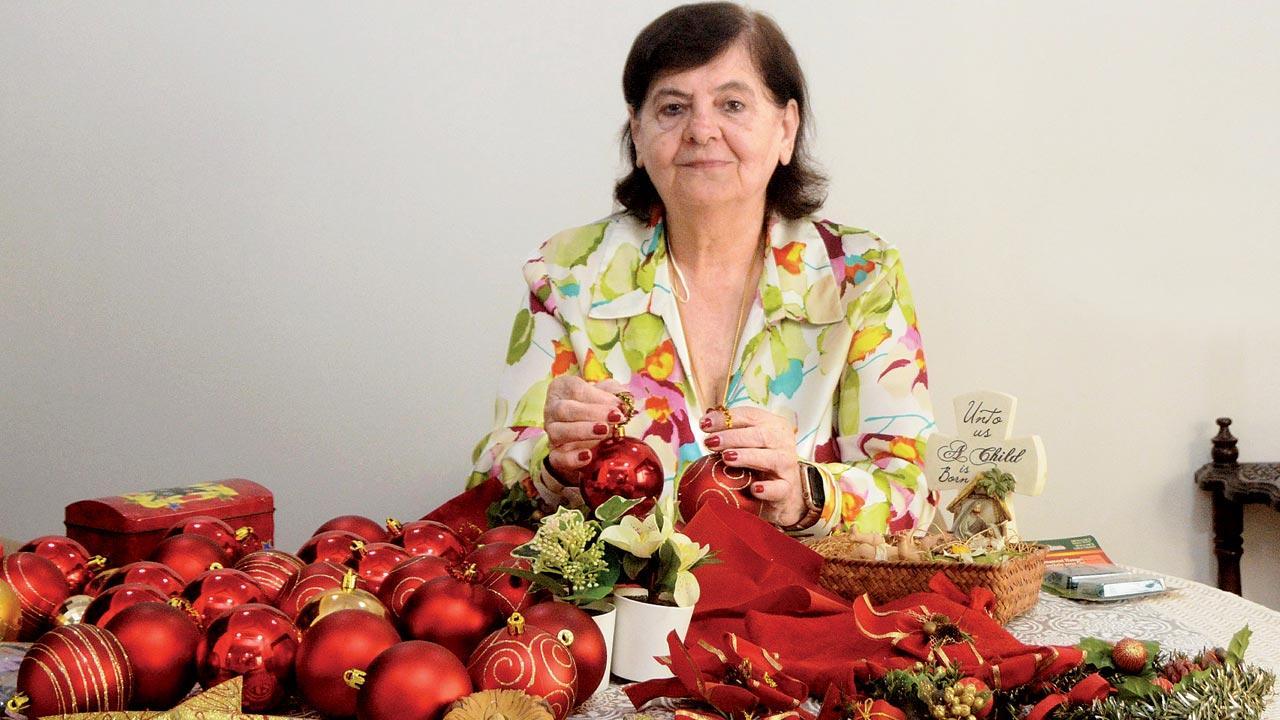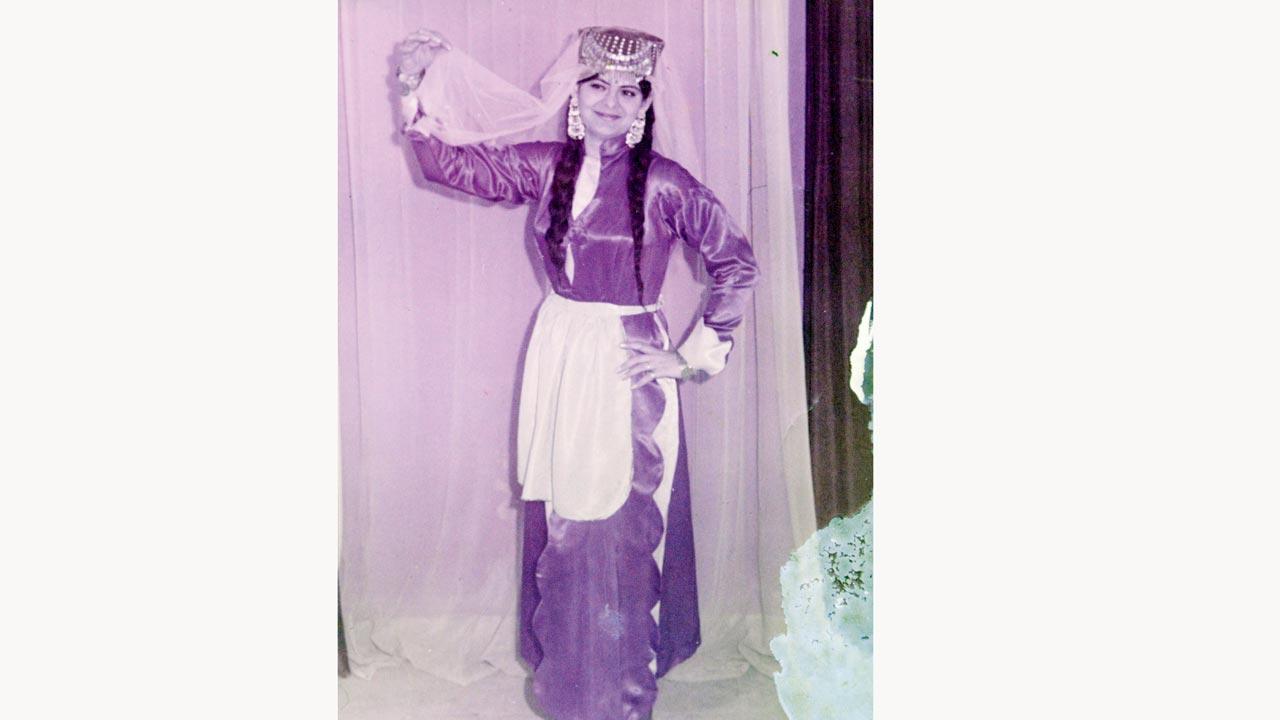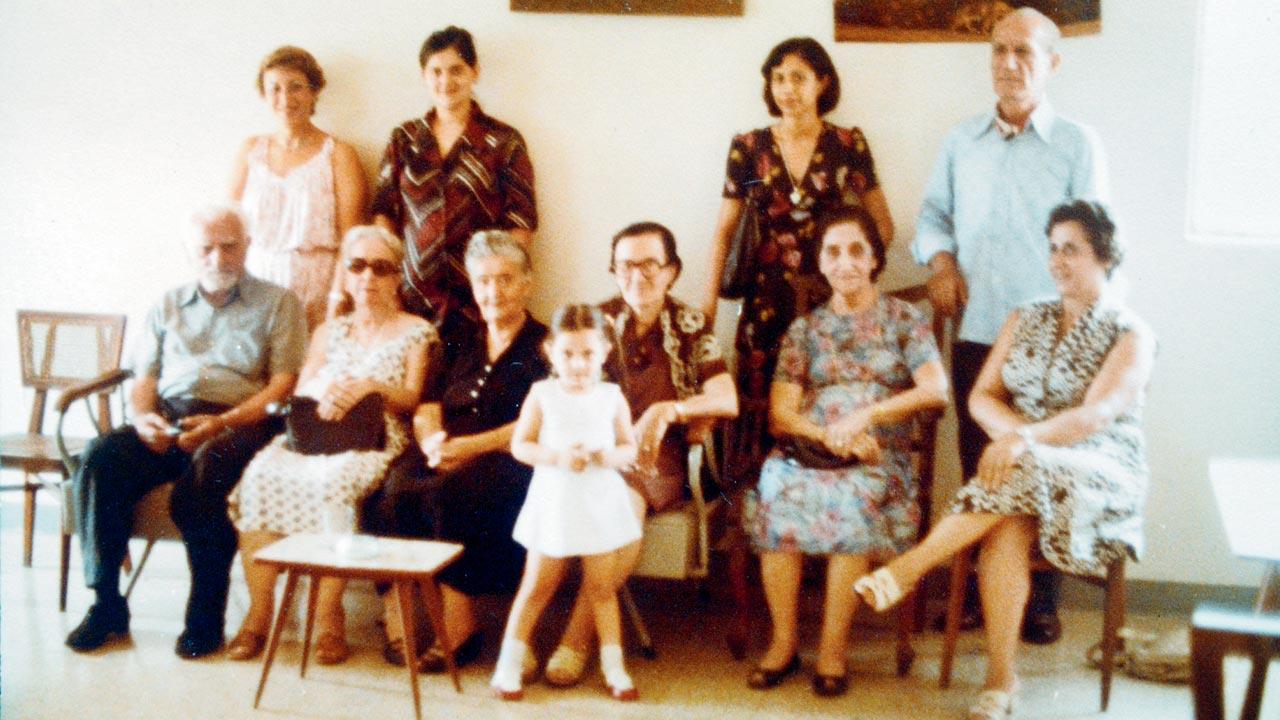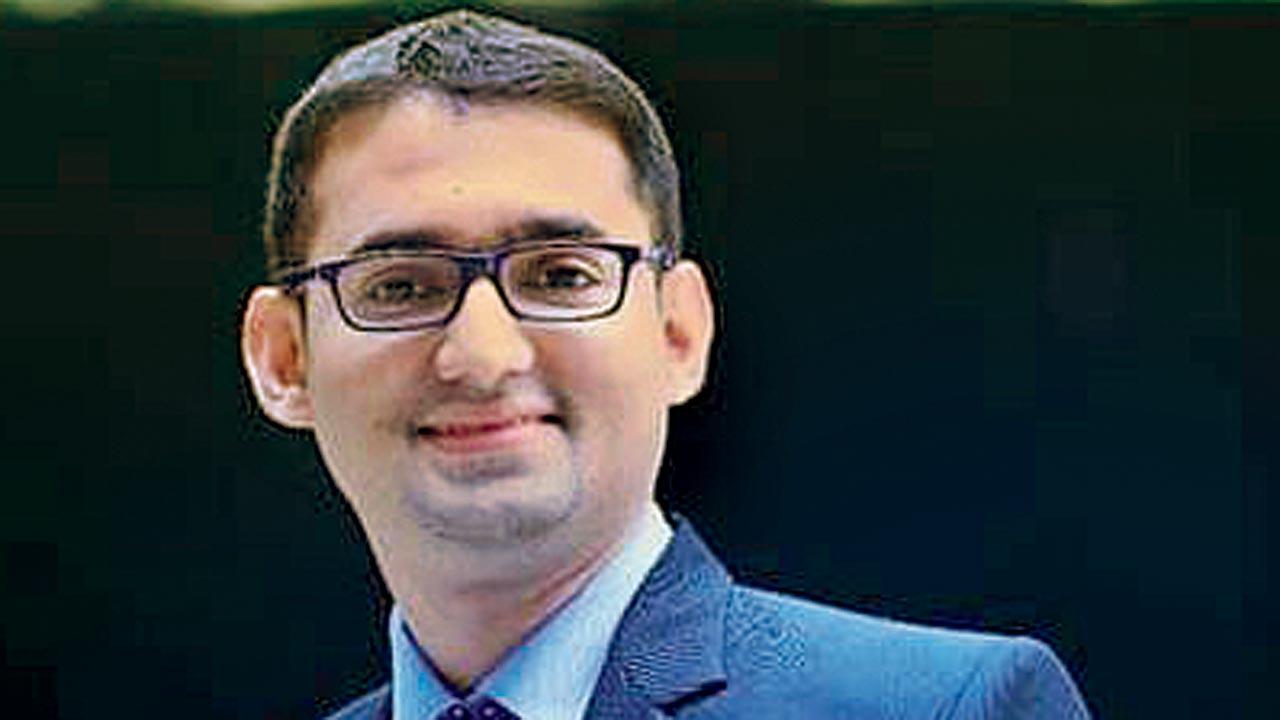The last remaining Armenian in the city, Zabel Joshi, paints a picture of how the community celebrates Christmas on January 6 every year

Zabel Joshi, the last registered Armenian in Mumbai has lived in India for half a century, more years than she lived in her home country of Lebanon. Pic/Satej Shinde
It was the summer of 1972 when a 24-year-old Armenian from Beirut, Zabel Joshi, stepped on Mumbai’s reddish-black soil. Then the young bride of a Gujarati businessman, she is now the last registered Armenian in Mumbai. She has lived here longer than she did in her home country.
ADVERTISEMENT
When we speak with the 74-year-old over the telephone, she’s on a short trip out of the city. “I have lived in Mumbai for 50 years!” she exclaims. “I’m the only Armenian left here. I would not have chosen any other country other than India to live in.”
 St Peter’s Armenian Church was built in 1796 by trader Jacob Petrus of Persia, in Fort. With a dwindling Armenian population in the city, its sister church, the Malankara Orthodox Syrian Church, was allowed to oversee and use the premises. Pic/Bipin Kokate
St Peter’s Armenian Church was built in 1796 by trader Jacob Petrus of Persia, in Fort. With a dwindling Armenian population in the city, its sister church, the Malankara Orthodox Syrian Church, was allowed to oversee and use the premises. Pic/Bipin Kokate
When Joshi first arrived, the city had a scattered handful of her country people who were close to joining their ancestors at the cemetery on Antop Hill. “There were just a few individuals, not big families when I came,” she says. “Some of them migrated to Canada and the US.”
Even without a community, Joshi kept Armenian heritage, language and culture alive as the lone flagbearer. The Armenian stream of Christianity is in oriental orthodox tradition and celebrates the birth of Christ on January 6.
 Young Joshi in her traditional Armenian dress
Young Joshi in her traditional Armenian dress
When her husband was alive, and all her three daughters were home, Joshi would lay out a feast every year. “I still do, but it’s more intimate now, with just one of my daughters in the city [the other two have migrated to Canada],” she says. “The whole family would gather around the table and we would sing Christmas carols in Armenian. A day ahead, I would huddle in the kitchen and start preparing our traditional dolma—vegetables stuffed with meat and rice, and roast chicken. Dry fruits especially raisins—which are an important part of our Beirut culture, would be put out along with sweets and baklava, and we would just chat, stay home and celebrate over dinner.”
An orthodox Armenian, Joshi’s parents lived in Lebanon where she was born and brought up. “I could speak Arabic, so learning Urdu-Hindi was not very difficult,” she says. “Over the years, I learnt Gujarati and can also understand a bit of Marathi.” She taught her daughters, including actor and entrepreneur Tulip Joshi, how to speak Armenian fluently. All three were baptised at St Peter’s Armenian Orthodox Church in Kala Ghoda.
 Zabel Joshi (standing second from left) and her eldest daughter Monalisa Joshi (in white frock) with older Armenians who lived in Mumbai some 45 years ago. This picture was taken after Sunday mass
Zabel Joshi (standing second from left) and her eldest daughter Monalisa Joshi (in white frock) with older Armenians who lived in Mumbai some 45 years ago. This picture was taken after Sunday mass
Though she only moved here after marriage, her love story with Mumbai started way before she met her husband Kishore Joshi in Beirut on a work trip. “I always liked India… I don’t know how and why,” she says, quickly adding, “Maybe because I watched a lot of Bollywood movies. There was this one theatre that played Indian movies, and I would go see all of them.”
Not just Christmas, other festivals were also celebrated with as much fanfare in the Joshi household—December Christmas with those who observed it, garba
at Navratri, and Diwali, like any other Indian.
 Thomas Varughese
Thomas Varughese
With a dwindling Armenian population, the cemetery at Antop Hill had to be shared with the Baha’I for upkeep and the 226-year-old St Peter’s Armenian Church has been host to Indian Orthodox Church since 1992. When a few Armenians were still around, there was mass every Sunday and Christmas mass in Armenian.
Armenians began to arrive in India in the 16th century, under Emperor Akbar’s reign following Ottoman and Safavid conquests, and settled in Lahore, Kolkata, Delhi and Surat. With a push from the East India Company in the 17th century, a higher number of Armenian merchants, traders and diplomats settled in Mumbai.
St Peter’s Armenian Church was built in 1796 by trader Jacob Petrus aka Hakob Hamadanchi, of Hamadan, Persia. As the community grew, a larger church was constructed over it in Meadows Street.
“St Peter’s Armenian Church closed for several years,” Thomas Varughese, a member of the Indian Orthodox Church, explains. He had served as secretary of its managing committee from 2020 to 2022. “In 1992, the heads of the Indian Orthodox Church and Armenian Orthodox Church met during the latter’s official visit to India. They decided that the former, also called the Malankara Orthodox Syrian Church, would use and care for St Peter as they are sister churches.”
The church also holds a special place for the Indian Orthodox Church. “We have only two proclaimed saints in our faith and both of them, St Gregorios and St Dionysius, have prayed in this church in 1895,” says Varughese.
Since then, Sunday prayers are held at 7 am followed by morning mass. “For several years, there was no Armenian service,” says Varughese, “A rare Armenian mass was held in 2018/19, when Father Moses, the head of the Armenian Church in India, came to Mumbai on a pilgrimage, before settling in Kolkata where their population is relatively larger.”
Why is January 6 the Armenian Christmas?
As per the Diocese of the Armenian Church of United Kingdom and England, “historically, all Christian churches celebrated Christ’s birth on January 6 until the fourth century”. A change in date was allegedly done to override a pagan feast dedicated to the Sun on December 25. To subdue the practice, Christmas was celebrated on December 25 and the feast of Epiphany was held on January 6. Since Armenia had no such pagan practice, and “it was not a satellite of the Roman Catholic Church”, the Armenians continue to celebrate Christmas on January 6 from the time of their forefathers until today.
 Subscribe today by clicking the link and stay updated with the latest news!" Click here!
Subscribe today by clicking the link and stay updated with the latest news!" Click here!







